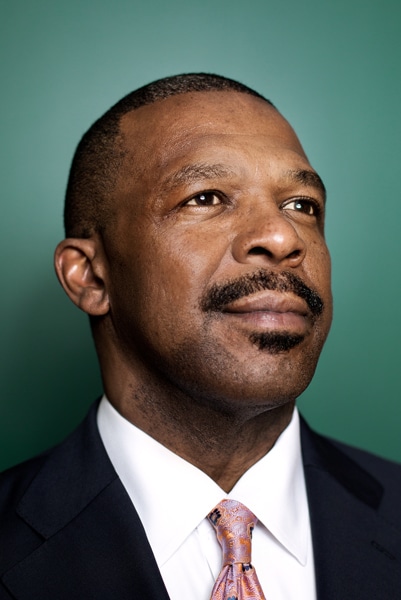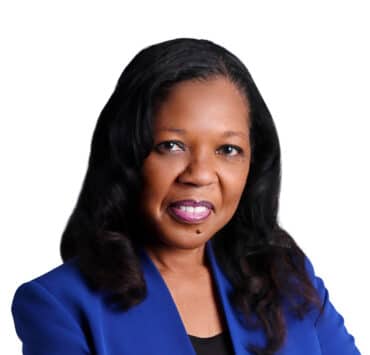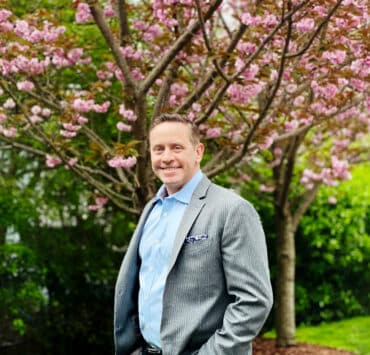|
Getting your Trinity Audio player ready... |
On November 17, 2019, Stanford Health Care was ready to open its new 824,000-square-foot facility. It was a special day ten years in the making. For David Jones, the celebration was better than a trip to Disney World. The chief human resources officer rushed from floor to floor, helping other administrators cut ceremonial red ribbons and give tours. Public officials, donors, and other VIPs gathered in the atrium, where Jones’s colleagues high-fived as they celebrated the long-awaited opening of the facility. Three hundred patients came into the new hospital, but none of them came alone. They each had a dedicated nurse right by their side.
Stanford Health Care first announced the project in 2006. Jones says the opening was so special because of what it represented. “It took so many people working together to get to that point, and a world-class hospital and top-level employees together help Stanford continue to lead and change healthcare globally.”
Jones came to the organization in 2017 to help build a more engaged and effective workforce, and he has a long track record of driving big results. Jones took his first CHRO-level position at the age of twenty-six, when another departing leader recommended him to lead the medical center HR function and provide strategic oversight at a small community hospital. There, Jones got a front-row view as a new CEO pushed his leadership team to implement robust continuous quality improvement methodologies.

“It set me on a course I never imagined because I saw at the very onset of my career how HR was a strategic business function,” Jones explains, adding that he was tapped to promote high employee involvement as part of an organizational transformation.
Suddenly, Jones found himself working with an outside firm to complete a multiyear change process. Together, they identified the top twenty business and quality issues the hospital needed to improve. Next, they assigned each issue to teams with dedicated leaders trained in a new quality process. While other hospitals were certifying a few people to lead everything related to quality, Jones and his team took a different approach and trained all leaders to use quality tools and track results.
It worked. The organization reduced length of stay and improved customer satisfaction, productivity, cost savings, and other key metrics. “We got tangible results to help improve the performance of the organization, and I saw that it was done through people and HR systems. The formative experience became the launching pad of my career,” Jones says.
When a new chancellor recruited Jones to help drive change across the academic and clinical enterprise at the University of Nebraska Medical Center, the rising leader was put on the national stage alongside top faculty leaders and hospital executives. Jones continued to develop his skills, but after four years, he had a revelation. “I had only worked in healthcare, and I wanted to see how my skills would play in a different industry,” he explains.
Jones went to Ameritrade to lead a hyper-growth process at what was then one of the world’s fastest-growing internet companies. At the height of the dotcom boom, Jones filled Ameritrade’s C-suite with high-caliber tech and financial services leaders, tripled the company’s workforce, and staffed important new offices including a 1,500-seat call center.
Although he enjoyed the experience, Jones returned to healthcare, where he continued to provide the transformational leadership that built his reputation. Stanford’s quest to build and open the most tech-advanced hospital in the world is part of what drew him to the organization in 2017.
“I like coming in when there is a lot of change and organizations are about to do something really special,” Jones says. Additionally, he saw the chance to make an impact. When Jones stepped in as CHRO, Stanford was receiving high marks on customer satisfaction and quality.
“COVID-19 brings so much uncertainty to the function and the health system, and we decided to meet the challenge head-on.”
“Stanford Health Care takes on some of the world’s most challenging medical conditions,” says Susan Guerra, chief customer officer at Collaborative Solutions and partner of Stanford Health Care. “Its focus on delivering excellent patient care, while using innovative technology sets them above all.”
Jones knew, however, that the organization needed to elevate the people experience to match the patient experience. So he leveraged his extensive HR expertise to help Stanford Health Care attract and retain the best talent in the nation.
Jones gathered performance data to establish his road map to transform and rebuild Stanford Health Care’s HR function and simultaneously focused on staffing the organization’s new hospital. Some new tools have helped during the heavy lift. A new employee engagement process helps managers identify employees’ strengths while a specialized app helps workers check in with their leaders.
Stanford’s HR teams were just starting to see results when the coronavirus pandemic threatened to derail their progress. “COVID-19 brings so much uncertainty to the function and the health system, and we decided to meet the challenge head-on,” Jones says. He reorganized the HR function around six new workstreams to align with the business response to COVID, and a suite of services to help employees navigate concerns related to personal safety, childcare, new training, and other areas.
Since the onset of the pandemic about two thousand team members, including physicians and staff members, have been infected by the virus. Many have opted into Stanford’s new program that provides meal delivery, hotels for family members, emotional support, spiritual counseling, and other services coordinated by a personal case manager. These and other efforts distinguish Stanford in the marketplace and help with satisfaction and retention. During Jones’s tenure, the organization has seen turnover drop from 11 to 7 percent.
Today’s leaders in business and healthcare often talk about the VUCA world we live in—a world full of volatility, uncertainty, complexity, and ambiguity. Constant change seems to be the new norm. And in the medical world, a strong HR function and an engaged workforce are the only antidote.

